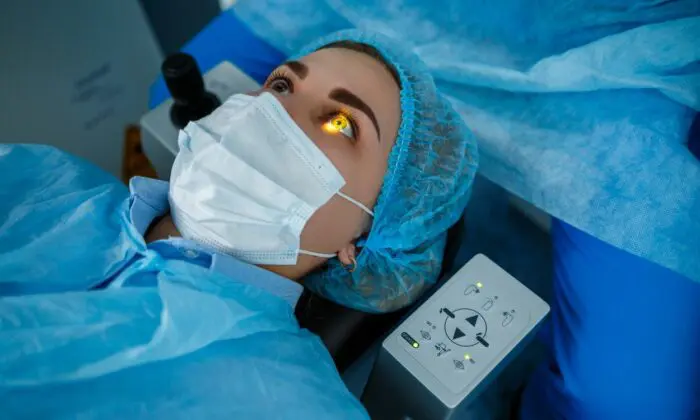
Are you one step away from saying goodbye to your glasses forever, but find yourself standing at a crossroads, unsure of which path to take? You’re not alone! The journey to crystal clear vision often presents a vital question: to go for Flap LASIK or to opt for the Flapless route? That’s where we step in to guide you through this crucial journey. In this comprehensive guide, we will unveil the nuances of both Flap vs. Flapless LASIK eye surgery procedures, offering a bird’s-eye view and diving deep into the specifics of each.
So, sit back, relax, and let’s embark on this enlightening journey together. Your path to a glasses-free life is just a few scrolls away!
Contents
Embarking on a journey to a life without glasses is indeed exhilarating, but before you take the plunge, it’s essential to understand the two pathways that lie before you: Flap LASIK and Flapless LASIK. Let’s unravel the fundamental concepts of these two prominent surgeries to help you steer your journey in the right direction.
Stepping into the more recent advancements, we have the Flapless LASIK, also known as PRK (Photorefractive Keratectomy). In this approach, instead of creating a flap, the outermost layer of the cornea (epithelium) is gently removed to expose the underlying corneal tissue. The same laser used in traditional LASIK is then employed to reshape the cornea.
At a glance, the primary difference between the two procedures(Flap vs. Flapless LASIK) lies in the initial steps – the creation of a flap in traditional LASIK and the removal of the epithelium in Flapless LASIK. This fundamental distinction leads to variations in recovery time, comfort levels, and suitability for different individuals.
As we venture further into this guide, we will delve deeper into the intricacies of each procedure, helping you weigh the pros and cons effectively.
Taking the step towards improved vision is both a momentous and meticulous journey. If you are leaning towards the Flap LASIK procedure, it’s pivotal to know what lies ahead. Let us walk you through the stages of this procedure, the technology harnessed, and the expected recovery timeline.
A comforting factor about the Flap LASIK procedure is that it’s quick, generally taking about 10 to 15 minutes for both eyes. Here’s a brief snapshot of what the process entails:
The technology powering Flap LASIK is nothing short of revolutionary. The femtosecond laser used in creating the flap allows for high precision and control, making the procedure safer and the outcomes more predictable. The excimer laser, responsible for the reshaping of the cornea, is characterized by its ability to remove microscopic layers of tissue with utmost precision, thereby sculpting the cornea to achieve the desired refractive correction.
Post-procedure, you may experience a brief period of discomfort, including burning or itching sensations, which usually subside within a few hours. Remarkably, many individuals notice a significant improvement in their vision almost immediately, with further stabilization and clarity emerging over a few weeks.
Now that you have a clearer picture of what the Flap LASIK procedure entails, you might be pondering about its modern counterpart, the Flapless LASIK. Stay with us as we unfold the facets of this innovative approach in the next section.
Stepping into the forefront of technological advancement, the Flapless LASIK, also known as PRK, presents itself as a viable and modern alternative for those seeking freedom from glasses. Just like its Flap counterpart, understanding the ins and outs of this procedure is key to making an informed decision. Let us guide you through the intricacies of this process.
Differing significantly from the traditional approach, the Flapless LASIK or PRK procedure adopts a different methodology. Here’s a glimpse into the step-by-step process:
In Flapless LASIK, the role of technology is critical in ensuring precision and fostering a smoother healing process. The use of advanced excimer lasers allows for a meticulous reshaping of the cornea, promising accurate results and a higher degree of safety.
The recovery journey in Flapless LASIK is slightly different. While the procedure promises excellent outcomes, the recovery period might extend a bit longer compared to Flap LASIK. Initially, you might experience a bit of discomfort, or a gritty feeling in the eye, which diminishes as the epithelium regrows. Notably, full stabilization of vision might take a few weeks, as your eyes adapt to the new corneal shape.
Choosing the right LASIK procedure (Flap vs. Flapless) is a significant decision that requires careful consideration of various factors. To help you weigh your options judiciously, we’ve listed down the pros and cons associated with both Flap and Flapless LASIK surgeries.
Cons
Pros
Cons
To make the right choice, it’s vital to prioritize personalized consultations where expert advice meets individual needs.
While online resources can provide a wealth of information, nothing beats the tailored advice you’ll receive from a one-on-one consultation with an experienced eye surgeon. Here’s how a personalized consultation can aid you in making the right choice:
Deciding on a LASIK procedure be it Flap or Flapless is indeed a pivotal moment in your journey towards embracing a life with clearer, sharper vision. The plethora of information available might seem overwhelming, and you might find yourself pondering over numerous questions and “what ifs”. This is exactly where personalized consultations step in as a beacon of clarity, guiding you with expert advice tailored to your unique needs and circumstances.
Are you looking for Lasik surgery? Experience the freedom of clear vision with Lasik Surgery at EyeMantra. Book your free appointment now at 9711116605